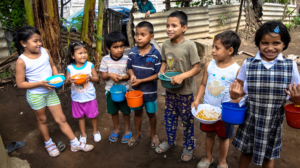10 Facts About Life Expectancy in Nicaragua

Nicaragua is the largest country in Central America and the second most impoverished nation in the Western Hemisphere. With a population of 6.4 million, nearly 50 percent live on just $2 a day. Though Nicaragua’s odds seem to be against it, the last two decades have shown an increase in life expectancy, averaging 74.5 years, which is an increase of six years since the late 90s. There are many contributing factors to this increase. Below are 10 facts about life expectancy in Nicaragua.
10 Facts About Life Expectancy in Nicaragua
- Nicaragua’s life expectancy is one year higher than the world average. As of 2019, the world average life expectancy was estimated at 72 years. One can follow life expectancy back to the Age of Enlightenment when only certain countries had the resources to industrialize. Consequently, this affected the distribution of health across the globe. Wealthy countries were healthy, whereas poor countries were not.
- Malnutrition and undernutrition is the primary cause of child mortality. Although Nicaragua is an agrarian economy, finding food and clean water is difficult. According to Project Concern International (PCI), nearly one of every five children have chronic malnutrition. PCI implemented the Food for Education project and feeds over 77,000 children every day. The integration between food and education encourages students to continue schooling without worrying about an empty stomach.
- Education is free and compulsory. However, travel expenses are costly and serve as an obstacle for low-income rural families. Only 29 percent of children attending school finish their primary education and roughly 500,000 children under the age of 12 are completely out of the education system. Those with more wealth and better health typically have an education of more than 12 years.
- Access to onsite health services is widely available. Nicaragua has a total of 32 public hospitals, 21 of which are departmental reference facilities. This means that medical professionals perform a variety of health services like inpatient care for internal medicine or surgery, and even diagnostic lab testing, in one central location. The majority of the hospitals, however, are on the Pacific side of the country, limiting access for those unable to travel.
- Nicaragua has the lowest HIV infection rates in Central America. Although case detection is slow (anywhere between two weeks and six months), preventive measures are stopping further spread of the disease. The Ministry of Health implemented case-based-surveillance (CBS) information systems. It continuously collects data on demographics, health events, diagnosis and routine treatment. The system also tracks outbreaks, viral mobility and mortality. CBS information systems support faster public health action.
- The Sustainable Sciences Institute (SSI) developed and implemented technologies for low-income health settings. Diagnostic kits are readily available to test for communicable diseases like dengue and leptospirosis. Testing and sampling happen at local or regional labs and lab techniques such as cell culturing receive modifications on-site in low-resource settings.
- Nicaraguan health care systems have the support of nonprofits. To name a couple, Project HOPE created the International Diabetes Educator and E-Learning Program to combat the rising threat of diabetes. The program’s aim is to train health care professionals and volunteers. Similarly, the Manna Project created adolescent health education programs in response to teen pregnancy. It also implemented Community Health Promotion, a program to teach communities about healthy lifestyle changes.
- Life expectancy for males and females follows the same pattern worldwide. As of 2019, females outlive their male counterparts by four years, averaging 76 years. This is one more year than the world average.
- The primary cause of death is noncommunicable disease. Diseases of the circulatory system account for 27 percent of premature deaths. Roughly 13 percent are due to external causes such as suicide and accidents, and nutritional/metabolic-related diseases like chronic malnutrition cause 9 percent of deaths. The Family and Community Health Model that the Pan American Health Organization implemented has improved health service accessibility by renovating the technology and health infrastructure.
- Health expenditures are the lowest per capita in Central America. Nicaragua spends about 8.7 percent of its total GDP on health care services and resources. Nicaragua spends roughly $59 on one person with an average of $27 out-of-pocket payment. Out-of-pocket payments directly influence the increase in privatized health care facilities.
The years of dedicated collaboration and innovation created health modifications that directly impact the life expectancy of Nicaraguans. These 10 facts about life expectancy in Nicaragua illustrate how far it has come in the last 20 years and how far it has to go before it has health, wealth and happiness.
– Marissa Taylor
Photo: Flickr
